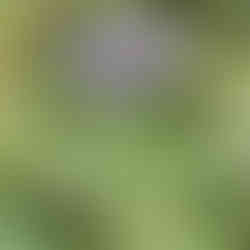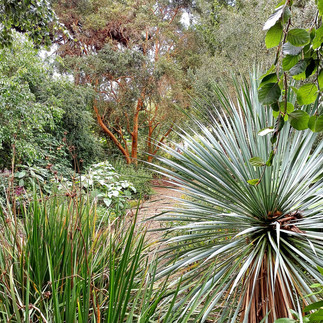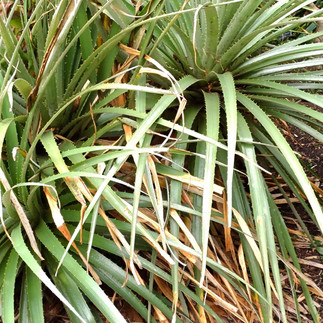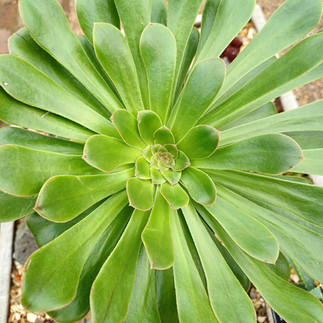Chelsea Physic Garden, Happy 350th birthday!
- London On The Ground

- Oct 6, 2023
- 5 min read
The garden of edible, medicinal and useful plants is London's oldest botanic garden.

Chelsea Physic Garden is 350 years old on 9 October, making it the third oldest botanic garden in the UK after Oxford and Edinburgh. The only one dedicated entirely to edible, medicinal and useful plants, the garden has more than 4,500 species across its four acres beside the Thames in Chelsea.
London On The Ground tours available for booking
For my schedule of forthcoming walks and events, please click here.
It was established in 1673, when the Worshipful Society of Apothecaries took a lease on the site, rural at the time, for use as an outdoor classroom to train apprentices.

In those days apothecaries not only dispensed medicines, but they also gave medical advice. The distinction between apothecaries and physicians was very blurred. Both practised 'physic', a word that has fallen out of use. It meant more or less the same as the word 'medicine' today.
The use of plants was an important element of an apothecary's practice. At Chelsea Physic Garden, students could learn to identify different plants, their properties and uses. This included poisonous plants, as it is crucial to be able to identify them (all the plants are poisonous in the wrong dose).
Although the Society of Apothecaries had ancient origins, it had only received a Royal Charter in 1617. Its hall in the City of London, which remains on the same site today, had no space for a garden, unlike rural Chelsea.
The instruction of student apothecaries continued at the garden until the 1970s.
Thanks to its south facing location on the north bank of the River Thames and a brick wall built around the garden in 1676/7, it has a microclimate that keeps it on average two or three degrees warmer than Kew Gardens.

Chelsea Physic Garden was originally right on the river bank, with its own wharf where the Society of Apothecaries used to moor its barge. The construction of the Chelsea Embankment in the 1870s eventually cut it off from the river and left it without a wharf.
One of the most important characters in the history of Chelsea Physic Garden was the physician Sir Hans Sloane. He trained there in the 1680s, before going on to become a wealthy and celebrated physician.
In 1712, he acquired the manor of Chelsea, which included the garden. Ten years later he leased the garden to the Society of Apothecaries in perpetuity for £5 a year. It had been struggling financially and this agreement ensured its long term survival. Today, this rental payment looks like astonishingly good value for four acres in one of London's most expensive areas!
Sloane's contribution to the success of the garden also included his appointing Philip Miller as Head gardener. Miller remained for 50 years and wrote 'The Gardener's Dictionary', which helped to popularise gardening in British culture and is still regarded as an important horticultural work.
Hans Sloane was born in 1660 in the North of Ireland to a family of fairly modest means that had moved there from Scotland. He rose to become a man of status and accomplishment.
Sloane was an innovative and successful doctor, whose patients included Queen Anne and the Kings George I and II. He also made significant contributions as a botanist and served as President both of the College of Physicians and of the Royal Society (succeeding Sir Isaac Newton).
Moreover, he was a great collector of objects from all over the world. On his death in 1753 he bequeathed his collection of more than 71,000 items to the nation. This formed the founding collection of the British Museum.
Sir Hans Sloane's legacy in many areas of science and understanding is considerable (he is remembered in many street and place names in and around Chelsea, such as Sloane Square, Sloane Street and Hans Street).

However, there is another side to his story.
Sloane's wealth and fame arose through his work as personal physician to the Duke of Albermarle in Jamaica and from his wife Elizabeth Langley Rose, who inherited sugar plantations on the Caribbean island.
He and his family profited significantly from the labour of enslaved Africans. In addition, their knowledge and that of indigenous Jamaicans added to his own understanding of botany and the human body.
Below his statue in the Chelsea Physic Garden there is now an information board drawing attention to the different and difficult aspects of Sloane's history.
The City Parochial Foundation, a charitable organisation, assumed responsibility for the garden from the Society of Apothecaries in 1899. The Chelsea Physic Garden charity was established to run it in 1983, before opening it to the public for the first time in 1987.
The garden was the site of the first heated greenhouse in England, built in 1680/1 and since demolished. The row of greenhouses of today and the garden's main building date from 1902.

There are a number of other buildings on the site, including the Cool Fernery (not the name of a prog rock band, but a house for a selection of ferns).

The Hans Sloane statue stands roughly in the centre of the garden, which is divided into different areas grouping plants according to categories of use.
These include the Garden of Medicinal Plants, the Garden of Edible Plants, the History Beds, the Garden of Useful Plants and the Dicotyledon Order Beds (plants whose seeds contain two cotyledons, or embryonic leaves). There is also a World Woodland and an Atlantic Islands collection.
Among the vast number of plants too numerous to mention are the largest outdoor flowering olive tree in England, a grapefruit tree, an avocado tree, a pomegranate, a range of chili plants and tea and coffee bushes. There are also bee hives and a lead water cistern bearing the date 1670, which means it's older than the garden itself.
(See the photo gallery at the end of this post for images of a selection of plants and views from the garden.)
The Garden of Medicinal Plants serves as a living museum of their use to treat illnesses at the time the garden was established.
It includes information boards and references to works by Nicholas Culpeper, a 17th century botanist, herbalist and physician, and the accepted belief in the doctrine of signatures. This held that God left his signature in the appearance of plants to guide people in their medicinal use.
For example, lungwort was thought to resemble lungs and so was used to treat chest infections. Similarly, the appearance of liverwort supposedly signalled that it could be used to treat diseases of the liver. Lady's mantle, alchemilla vulgaris, was prescribed for "women or maids as have over great flagging breasts, causing them to grow less".
Click on photos to enlarge
Unfortunately, Culpeper was wrong about these plants. However, he was right about the use of the rose hips from dog rose, rosa canina. It is rich in vitamin C, so it "acts upon the gums and teeth, preserving them from corruption and fastening them if they be loose".

As Chelsea Physic Garden celebrates its 350th anniversary and both the achievements and sometimes uncomfortable aspects of its past, it also continues to look to the future.
Its website states that its mission is:
"To demonstrate the medicinal, economic, cultural and environmental importance of plants to the survival and well-being of humankind."
The Garden's plant collection provides important opportunities for research, conservation, education, community outreach and public display. It is also an important centre for botanic art.
Below are a selection of the many photographs I took on a recent visit to Chelsea Physic Garden. I will not attempt to name any of the plants shown or to describe their medicinal or other significance.
I include them to highlight that, in addition to its botanical and historical importance, Chelsea Physic Garden is a beautiful place for a day out.
Click on photos to enlarge
London On The Ground tours available for booking
For my schedule of forthcoming walks and events, please click here.


























































Comments